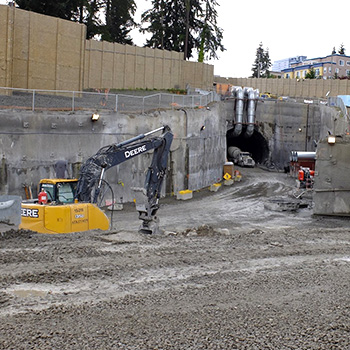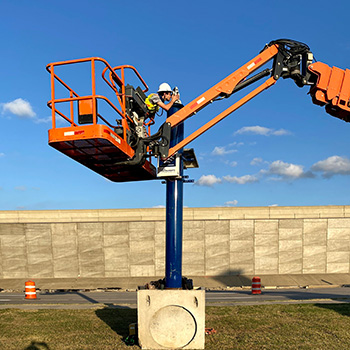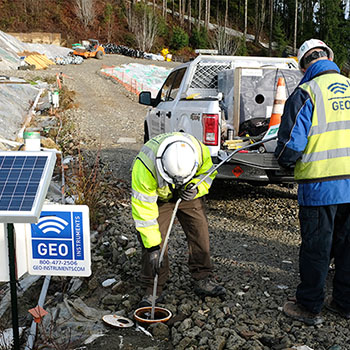GEO monitors the stability of retaining walls, including new walls built for construction projects and existing walls impacted by adjacent construction or undergoing repairs. Datasheet






Purpose of Retaining Walls
Retaining walls support and stabilize excavations, foundations, slopes, and embankments.
Retaining Wall Failures
Despite careful design and construction, wall failures can occur, usually due to one or more of the conditions below:
- Insufficient drainage that allows water to accumulate behind the wall and results in deformation, cracks, tilting, erosion, and loss of backfill.
- Degraded foundations that allow the wall to tilt or slide.
- Increased loads from traffic or new construction that exceed the limits of the original design.
- Aging of the wall from weathering, erosion, freeze-thaw cycles, and corrosion of anchors.
Visual Signs of Defective Retaining Walls
There are federal, state, and local regulations for periodic inspections and condition assessments for retaining walls of certain heights or in specific locations. Visible signs of defective walls include:
Wall Face
Increasing tilt, differential tilt of adjacent panels, vertical cracks, spalling, bulging, misalignment, widening of joints, or blocked drainage channels.
Soil & Surfaces above the wall
Tension cracks or settlement, gap between soil and the backside of the wall, lateral cracks in pavement at the top of the wall, or excessive ponding of water on backfill.
Soil & surfaces at the base of the wall
Deformation of the soil or surfaces at the base of the wall, including settlement, heave, or buckling.
Prioritizing Instrumented Monitoring
Instrumented monitoring can reveal trends in deformation and tilt of the wall face, changes in anchor loads, build-up of pore-water pressure, and lateral displacements in the soil behind the wall.
Walls that may require continuous, instrumented monitoring include:
-
Walls with a higher risk of failure and more significant consequences are top priority. This includes walls near critical infrastructure, populated areas, or in areas prone to natural hazards.
- Walls affected by new construction. Monitoring is usually required as part of the permitting process.
- Walls subject to heavy rainfall or seismic activity require more frequent monitoring.
- Older walls known to be in poor condition or nearing the end of their design life may require more immediate and continuous monitoring.
Automated Monitoring
Continuous, automated monitoring is deployed during construction, repair, or replacement of walls that protect or support highways, railways, and other infrastructure.
AMTS systems can monitor long spans of wall with high accuracy, revealing changes in tilt, lateral displacement, and settlement.
Tiltmeters are fixed to directly to the wall and are useful for detecting differential tilt of adjacent panels.
Shape Arrays are installed on the backside of the wall or on slopes above the wall to monitor lateral displacement, deformation, and rotation.
Load cells or strain gauges monitor anchor performance.
Piezometers monitor pore-water pressure.
Crackmeters can monitor movement at joints.
Related: Monitoring Excavations
GeoCloud Automation operates 24/7 to transfer monitoring measurements from the project site to secure project web sites. GeoCloud automation features wireless data acquisition, web-based data management, and dedicated website access to alerts, graphs, and reports.








